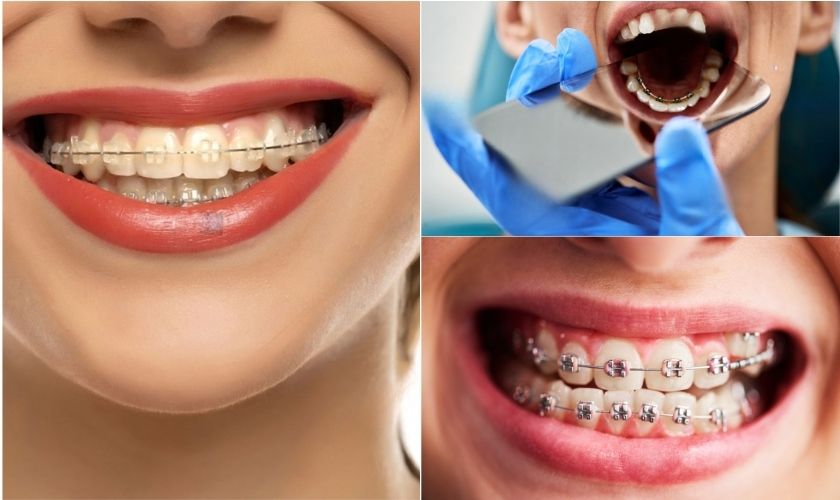Many of us with orthodontic treatment know the struggle of dealing with wax on braces. Your braces play a vital part in creating that confident, straight smile. The metal brackets and wires can rub against your mouth’s sensitive tissues and cause unwanted irritation. Dental wax has become a significant companion that acts as a protective shield between your braces and your mouth’s delicate tissues.
This flexible material comes from natural waxes and sometimes includes extra ingredients like mint to improve texture and taste. Dental wax stands out as one of the best ways to ease the pain from braces, especially when you have just started your treatment. You might be feeling the discomfort of brackets rubbing against your gums or wondering about different types of orthodontic specialists. This piece will help you understand everything from using wax on braces to choosing between dental professionals. You’ll learn which dental expert matches your specific oral health needs and whether you should see an orthodontist or a dentist.
Understanding the Roles: Orthodontist vs Dentist
People often mix up what dentists and orthodontists do, especially when they need help with oral health problems. These dental professionals have different backgrounds and skills that make them unique.
Education and Training: General Dentistry vs Orthodontic Specialization
Dentists and orthodontists start with the same basics, but their paths take different turns. Dental school takes four years to complete, and graduates earn either a Doctor of Dental Surgery (DDS) or Doctor of Dental Medicine (DMD) degree. They must pass complete exams to get their license to practice.
Orthodontists take their education much further. After dental school, they spend another 2-3 years in an accredited orthodontic residency program. This extra training focuses on tooth movement, jaw arrangement, and facial development. They complete about 3,700 hours of specialized training that makes them experts in fixing misalignments.
Scope of Practice: Cleanings and Fillings vs Braces and Jaw Alignment
These professionals handle very different tasks. Dentists work like primary care doctors for your mouth. They do check-ups, cleanings, cavity fillings, tooth extractions, and root canals while keeping an eye on your oral hygiene. On top of that, they watch how children’s teeth develop and can spot when they might need an orthodontist.
Orthodontists focus on fixing teeth and jaw alignment issues. They’re experts at spotting and treating malocclusions (improper bites). They watch facial growth patterns and use special tools like braces, aligners, retainers, and palatal expanders. Unlike dentists, they don’t do basic dental work such as fillings or crowns.
When You Might See Both Specialists
Good oral care often needs both professionals. You should see your dentist every six months for cleanings and check-ups, even while getting orthodontic treatment. Your dentist will send you to an orthodontist if they find alignment problems. Sometimes you’ll need teeth pulled before starting orthodontic work, and your orthodontist will ask your dentist to do this. This shared approach gives you the best care from each expert.
Common Dental Issues and Who to See
Choosing the right dental specialist can save you time, money, and pain. Each specialist brings unique expertise to tackle specific oral health problems.
Tooth Pain and Cavities: Dentist First
A cavity starts as a tiny hole in your tooth from decay. By their mid-30s, more than 80% of Americans have all but one of these cavities. Your dentist should be your first stop if you notice sensitivity to hot or cold foods, ongoing toothaches, or bad breath. They’ll check your teeth, maybe take X-rays, and suggest the best treatment. Options range from fluoride treatments for early decay to fillings, crowns, or root canals for serious cases.
Crooked Teeth or Bite Problems: Orthodontist Required
Crooked teeth need expert care. You should get an orthodontist to review your teeth if you see crowding, gaps, or teeth that don’t line up right. Bite problems show up in different ways – crossbites where upper teeth sit inside lower teeth, overbites where upper teeth overlap lower teeth by a lot, and underbites where lower teeth stick out past upper teeth. These problems affect about 56% of people worldwide. Braces or aligners will give a proper fix under orthodontic care.
Gum Disease and Oral Hygiene: Dentist’s Domain
Bad oral hygiene lets plaque build up and causes gingivitis – a mild form of gum disease that daily brushing and flossing can usually fix. All the same, without treatment, it gets worse and turns into periodontal disease. Watch for bleeding gums, receding gumlines, and possible tooth loss. Your dentist offers solutions from regular cleanings to deep cleaning below your gumline with root surface smoothing.
Jaw Pain or Misalignment: Orthodontic Evaluation
Temporomandibular joint (TMJ) disorders might be behind your jaw pain, clicking sounds, or trouble chewing. Many things can cause these symptoms, but bite problems often play a big role. Your orthodontist can get a full picture of your jaw structure and bite. They’ll decide if braces, headgear, or other special devices might ease your pain.
Treatment Options Compared
Orthodontists and dentists offer different treatment options based on their unique training and specializations.
Braces and Aligners: Orthodontist Expertise
Orthodontists dedicate their practice to fixing misalignments with specialized tools. Years of advanced training help them diagnose and treat complex bite problems through braces, clear aligners, and retainers. Each patient gets a customized treatment plan that targets specific alignment issues such as overbites, underbites, crossbites, and overcrowded teeth.
Fillings, Crowns, and Root Canals: Dentist’s Tools
Dentists excel at restorative procedures to fix damaged teeth. They treat decay by removing damaged areas and filling them with amalgam, composite resin, or porcelain. Severe damage requires crowns – protective caps made from ceramic, composite, porcelain, or metal. Root canal procedures clean out infected tooth pulp, sanitize the canals, and seal them to stop further damage.
Preventive Care: Cleanings, X-rays, and Fluoride Treatments
Preventive dentistry focuses on regular checkups, professional cleanings, and diagnostic work by dentists. Insurance plans often cover these services fully with minimal costs. Basic preventive care combines oral evaluations, teeth cleanings, x-rays, and fluoride treatments – particularly important for children.
Cosmetic Procedures: Whitening vs Orthodontic Reshaping
Dental cosmetic work ranges from simple whitening to complex orthodontic changes. Teeth whitening by dentists uses concentrated hydrogen peroxide solutions. Orthodontists take a different approach and reshape teeth through controlled movement rather than surface treatments.
Cost, Insurance, and Long-Term Care
Money matters a lot when you’re deciding between a dentist and an orthodontist.
Cost Differences: Routine Visits vs Orthodontic Plans
The price gap between these specialists is quite striking. A regular trip to the dentist costs between ₹6,328 and ₹16,876 if you don’t have insurance. Orthodontic treatments need more investment—metal braces will set you back ₹20,000 to ₹50,000, while ceramic braces range from ₹30,000 to ₹80,000. Lingual braces, which stay hidden behind your teeth, come at a premium price of ₹70,000 to ₹1,50,000.
Insurance Coverage: What’s Typically Included
Your dental insurance usually works on a 100-80-50 model. This means full coverage for preventive care, 80% for simple procedures, and half coverage for major work. Orthodontic coverage works differently and comes with lifetime limits between ₹84,380 and ₹253,141 per person. Most plans pay half of your orthodontic treatment costs up to this limit. Keep in mind that many policies make you wait 6-12 months before orthodontic benefits kick in.
Follow-Up and Maintenance: Dentist vs Orthodontist Roles
Each specialist needs different levels of follow-up care. Dentists want to see you every six months for checkups. Your orthodontist needs more frequent visits—every 4-8 weeks for adjustments. Most treatments last 18-36 months. Regular dental checkups should continue during your orthodontic treatment.
Comparison Table
| Aspect | Dentist | Orthodontist |
| Education | 4 years dental school (DDS or DMD degree) | 4 years dental school + 2-3 years orthodontic residency (3,700 hours specialized training) |
| Main Focus | General oral health maintenance | Teeth and jaw alignment correction |
| Regular Services | • Cleanings• Fillings• Root canals• Extractions• Regular check-ups• Cavity treatment | • Braces installation/adjustment• Aligners• Retainers• Palatal expanders• Jaw alignment treatment |
| Visit Frequency | Every 6 months for routine checkups | Every 4-8 weeks during treatment |
| Treatment Duration | Varies by procedure | 18-36 months typical for orthodontic treatment |
| Common Problems Treated | • Cavities• Tooth pain• Gum disease• General oral hygiene | • Crooked teeth• Malocclusions• Overbites/Underbites• Jaw misalignment |
| Typical Costs | ₹6,328 – ₹16,876 per visit (without insurance) | • Metal braces: ₹20,000 – ₹50,000• Ceramic braces: ₹30,000 – ₹80,000• Lingual braces: ₹70,000 – ₹1,50,000 |
| Insurance Coverage | • 100% for preventive care• 80% for simple procedures• 50% for major procedures | About 50% coverage with lifetime maximum between ₹84,380 – ₹253,141 |
Conclusion
Knowing the difference between dentists and orthodontists will help you make smarter choices about your oral health care. Dentists are your main oral healthcare providers. They handle basic cleanings, fill cavities, and treat gum disease. Orthodontists take a different path and focus on fixing misalignments with braces and aligners after extra years of training beyond dental school.
Your dental problem should point you to the right specialist. A dentist should be your first call for tooth pain, cavities, or gum issues. Problems with teeth alignment, bite issues, or jaw pain need an orthodontist’s special skills. These professionals often team up to give you complete care. You’ll keep seeing your dentist even while getting orthodontic treatment.
Money matters a lot when picking between these specialists. Regular dental visits cost less than orthodontic treatment plans that can last years. Insurance coverage is different too. Most plans pay about half the cost of braces or aligners up to a lifetime limit.
Take time to think about your oral health needs before booking your next visit. Each specialist brings their own expertise – whether you need a dentist’s filling or an orthodontist’s braces. This smart approach will get you the right care, save money, and avoid extra discomfort. Getting proper dental care now – through regular cleanings or orthodontic work – will make a big difference in your long-term oral health and overall well-being.
FAQs
Q1. What’s the main difference between a dentist and an orthodontist?
While both are dental professionals, dentists focus on general oral health, including cleanings, fillings, and gum care. Orthodontists specialize in correcting teeth and jaw alignment issues using braces, aligners, and other specialized appliances.
Q2. When should I see an orthodontist instead of a dentist?
You should see an orthodontist if you have issues with teeth alignment, bite problems, or jaw pain. For routine check-ups, cavities, or gum problems, a dentist is your first point of contact.
Q3. Are orthodontic treatments more expensive than regular dental procedures?
Generally, yes. Orthodontic treatments like braces or aligners typically cost more and require a longer commitment compared to routine dental procedures. However, costs can vary based on the specific treatment and duration.
Q4. Can my regular dentist perform orthodontic treatments?
While some dentists may offer basic orthodontic services, orthodontists have specialized training and expertise in complex teeth and jaw alignment issues. For comprehensive orthodontic care, it’s best to consult an orthodontist.
Q5. How often should I visit a dentist versus an orthodontist?
Dental check-ups are typically recommended every six months. If you’re undergoing orthodontic treatment, you’ll need to see your orthodontist every 4-8 weeks for adjustments, while still maintaining regular dental visits.








